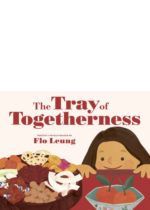Every morning, Ms. Marta goes out to check that the world is how it should be: her friends sitting on a terrace playing cards, the beach where it always is, children playing in the playground. There’s nothing particularly special about Ms. Marta’s neighborhood except that it’s the only one like it in the world: it’s hers.
Community
Building An Orchestra Of Hope: How Favio Chavez Taught Children To Make Music From Trash

An exuberantly illustrated true story about innovation, community, and the power of music.
Magic: Once Upon A Faraway Land

Growing up on a pineapple farm in Mexico, a young girl discovers the magic in everyday transformations that take place around her.
Tray Of Togetherness

The Tray of Togetherness is a celebration of a culturally specific experience that also speaks to the universality of having family traditions and the specialness of that connection.
Where We Live: Mapping Neighborhoods Of Kids Around The Globe

This fascinating look at 16 children’s neighborhoods around the world broadens readers’ understanding of global cultures.
Blood Like Fate

While struggling with her new role as Matriarch, Voya has a vision of a terrifying, deadly future, and with a newfound sense of purpose, she vows to do whatever it takes to bring her shattered community together and prevent the destruction of them all.
Still This Love Goes On

Based on Sainte Marie’s song of the same name, Still This Love Goes On combines Flett’s breathtaking art with vivid lyrics to craft a stunning portrait of a Cree worldview. At the heart of this picturebook is a gentle message about missing our loved ones, and the promise of seeing each other again.
The Little House Of Hope

When Esperanza and her family arrive in the United States from Cuba, they buy a little house, una casita. It may be small, but they soon prove that there’s room enough to share with a whole community.
Subway Sparrow

Although the passengers of the D train speak different languages, they work together to rescue a frightened bird.
Our World Is A Family: Our Community Can Change The World

Demonstrates the importance of welcoming people from all over the world into the community with love, compassion, and acceptance.
